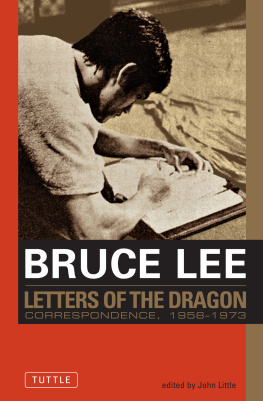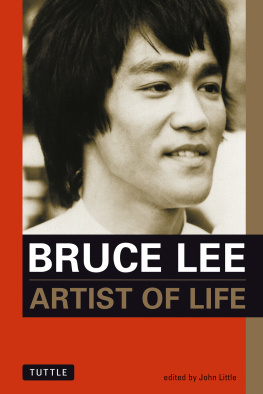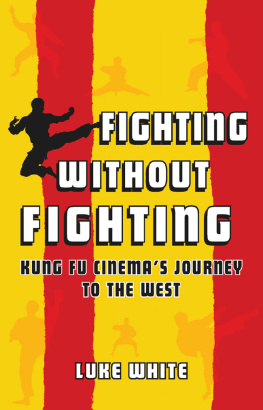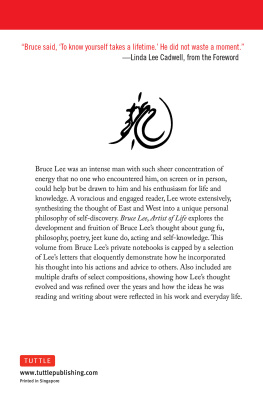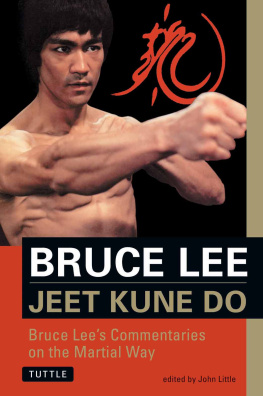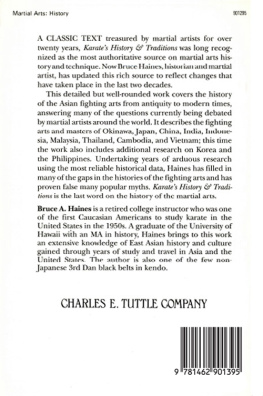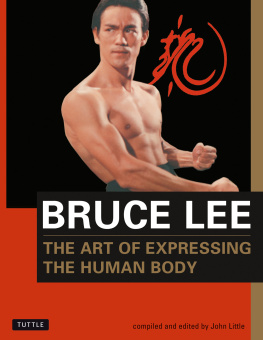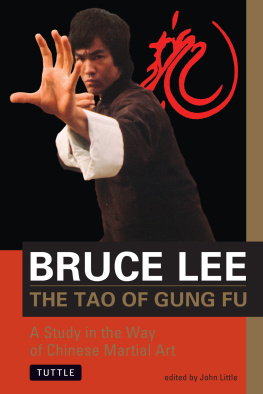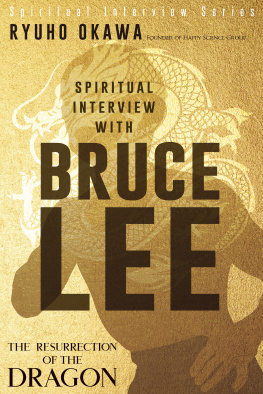
For my mother
Acknowledgements
I would like to thank Julian Alexander and Ingrid Connell for their help in bringing this book to fruition.
Pictures
The author extends his grateful thanks to all the copyright holders who have generously given permission for the illustrations used in this book, including Twentieth Century Fox, Paramount, Golden Harvest, Warner Brothers and the South China Post. Every reasonable effort has been made to clear all of the images used in the book; however if anyone feels that they have been inadvertently overlooked, please contact the author via the publishers so that any mistakes may be redressed and future editions of the book can be amended.
Introduction
Those who have read earlier editions of my biography Bruce Lee: Fighting Spirit will recognize passages in this book. But there is such a significant amount of new material here that it can be considered to be a new work rather than an updating of the previous one. In the course of researching new material Ive taken the opportunity to re-interview several people and correct some mistakes in previous accounts of Bruce Lees life and work not only in my own book but also in those of other biographers. Ive also taken the opportunity to compile a new photo section.
Many of the new interviews and new material concerns the Seattle years, which are often little more than a footnote to Bruce Lees headlong rush to stardom. But as these were the happiest years of his life I have given them the consideration and detail they warrant. This book also includes a comprehensive new appendix, packed with detailed information and anecdotal material that would have interrupted the flow of the narrative text. This new section also includes references to projects that Bruce Lee set in motion but was unable to complete.
As the years have passed since Bruce Lees death it has become possible to see more accurately what his legacy is becoming. In redefining action films he set the stage for a new era of filmmaking. A film like Kill Bill openly acknowledges this by having its star Uma Thurman wear an iconic yellow and black track suit similar to the one Bruce wore in Game of Death, as well as lifting dialogue from Fist of Fury. Bruce Lee was the driving force behind moving martial arts and martial sport into modern era, and the development of mixed martial arts and ultimate fighting is a direct result of Bruces application of his jeet kune do philosophy to sports karate, the introduction of full-contact fighting and the cross-pollination of styles.
As an icon, Bruce Lees worldwide popularity continues to grow. Asian Time magazine even placed him on their list of heroes who helped Asia from poverty to powerhouse and from imitator to imitated. His face has appeared on postage stamps throughout the world. At the time of writing there are plans for a Broadway musical about his life, a Hong Kong theme park and, as a prelude to the Beijing Olympics, plans for a 40-part TV series The Legend of Bruce Lee.
Bruce always wanted to go beyond the limits and do it faster, longer and higher, pushing the boundaries of what is physically possible for the human body, both through the demands he made on it and via the cutting-edge training methods he employed. He also pushed the limits of his art, being the first Chinese man to reveal the secrets of the martial arts to the West. He even pushed the limits of the martial arts themselves as he rode roughshod over tradition and protocol. Not only did he break the mould of the Chinese stereotype as seen by the Western world, he remade the image of the Asian man through his films and personal life. All of this was underpinned by a philosophy, jeet kune do, which in its ultimate expression reflects the nature of the Tao itself, and so is limitless in its possibilities.
Bruce Thomas
Life and Work
Early Years
Grace was an attractive girl, the daughter of a Chinese mother and German father. Raised as a Catholic she had come from Shanghai to the British colony of Hong Kong at the age of nineteen. While accompanying her father on his regular visits to the opera she was taken by its comic singer and actor Lee Hoi Cheun and would make sure she always had a seat near the orchestra where he would be able to see her. Her efforts to gain his attention were not in vain. Hoi Cheun and Grace were soon married and took up residence at 218 Nathan Road in the Kowloon district of Hong Kong.
Hong Kongs Cantonese Opera was more of a music hall than a classical company like the Peking Opera. Although Hoi Cheun wasnt a great celebrity he had an enthusiastic following that enjoyed his dramatic flourishes and he had done well enough to become the owner and landlord of several apartments. Opium smoking was common among the men and Hoi Cheun was fond of saying that he smoked it because it helps sweeten my singing voice. Hoi Cheun was also partial to gambling, and so his cronies, as much as his family, enjoyed his company and generosity.
Bruce was the fourth child born to Hoi Cheun and Grace. The Lees first child, a son James, had died soon after birth and this had been taken as a bad omen that the spirits were looking on them unkindly and trying to prevent the continuation of the family name. A daughter Phoebe was adopted, after which Grace gave birth to a healthy daughter, Agnes, and a son, Peter.
While these children were lodged with relatives in Hong Kong, Grace was accompanying her husband on the Cantonese Opera Companys tour of the US when she discovered that she was again pregnant. While her husband continued on to New York, Grace stayed in San Francisco.
On 27 November 1940 according to the Chinese zodiac, the Year of the Dragon between 6 and 8a.m. the Hour of the Dragon at the Jackson Street Hospital in San Franciscos Chinatown, Grace Lee gave birth to another son. To confuse any potentially unfriendly spirits, the child was given a girls name, Sai Fon (Small Phoenix) and one of his ears was pierced. Grace Lee soon renamed her new son Jun Fan (Return Again) because she had an intuition that he would one day return to his birthplace. On her papers, the supervising doctor, Mary Glover, nicknamed the boy Bruce and anglicized his family name to Lee. The name was remembered, although he was never called Bruce by his family until he enrolled in college, when he was twelve years old.
Early in 1941, a few months after Bruces birth, the Lee family returned to Hong Kong. The city then was nothing like it is today with its dramatic vistas of steel and glass, Chanel-suited businesswomen and Mercedes limos. This Hong Kong was a seething maze of lanes threading between ramshackle apartment buildings, crowded shops and restaurants where signs projected from every available surface. The lanes were choked with lorries, taxis, pushcarts and rickshaws, all jostling with locals in their traditional suits of long shirts and baggy trousers. Vendors shaded by canopied stalls displayed fruit, fish and rows of shiny hanging ducks. The atmosphere was a complex blend of exotic food and equally exotic rubbish in various stages of decay a thick stew of smells and an oppressive, muggy heat. The humid conditions soon made baby Bruce ill, and he remained a sickly, skinny child throughout his early years.
The Lees apartment on Nathan Road was on the second floor of an old building above some shops. The narrow stairway had no door at street level, so tramps frequently set up home in the entrance. Two sets of strong doors guarded the apartment entrance on the second floor landing, though, the outer doors with thick steel bars and the inner doors containing a peephole.
Next page

